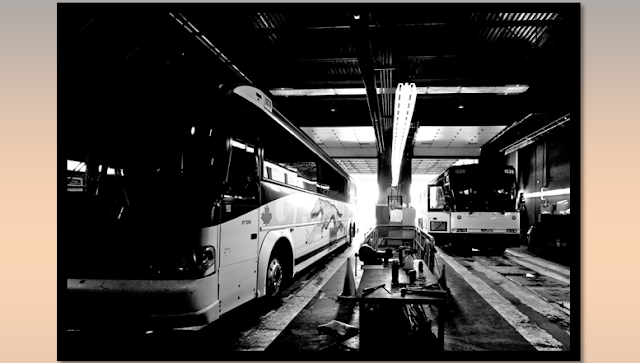Breaches in safety typically occur at numerous levels when warning signs go unheeded, meaning someone must be in charge of safety, and equipped with a plan for every phase in the operation.
The question the safety director must resolve is if policy and employee practices actually ensure practical, tangible and authentic safety measures. True working safety emanates from the small reliable procedures in a process that is always changing. Each measure by itself may not appear safety related, but administered correctly, each step contributes to a desirable condition I call true safety.
My own routine begins every Saturday morning at the garage at 3 a.m. I need this extra time to fine-tune my safety program without interruption. I start with over-pit inspections to ensure the reliability of the buses going out on the highway that day. While some consider reliability as ensuring the vehicle is ready for the duty cycle, utility is not my immediate worry. An unreliable vehicle that can fail in any way always compromises safety. In my system, reliability is a safety function.
A keen sense of hearing and smell are useful tools during inspections. Unusual noises coming from the vehicle usually indicate a problem. Walking by a bus that emits the odor of gear oil usually indicates a hub seal is leaking. Hearing an odd noise or detecting an odor and not checking it out represent poor safety behavior. Attention to every detail is the basic element in true safety.
Don’t be a robot or merely a box checker. True safety takes the safety department to a level of care where everyone knows to stop and look for problems at the least provocation. Once the buses move to the ready line, I speak with each driver individually to check their fitness for the day. I want drivers to be wakeful and alert, arriving on time and not rushing to make a diving clock-in. Drivers rushing for the clock are most likely late for their report time, and subsequently late for their order — not the mindset of true safety. Positive behavior and best practices are paramount.
Personal appearance and mental attitude figure strongly in a truly safe operation. We discuss the weather and the effect it will have on driving that day and have a solid plan to deal with the conditions. A safe carrier gives its drivers the option and even encourages them to stop driving as the situation may require. We review the destination or event for the group and assess the passengers. Are they children, adults or teens? In the case of events with a definite start time, the drivers know not to let the passengers influence the operation of the bus, or where to park and unload. Too often passengers try to manipulate the driver for their personal benefit.
The driver is in control and must be the only person making the decisions. They must not take direction of any type from anyone else. If the situation requires assistance, such as backing up or parking, the driver should step off the bus and have a look for himself. We once had a driver back into a tree, causing damage to the bus. In our discussion to learn what had happened and why, I was able to pinpoint three minutes of unrelated detail which made it clear we had a problem. The driver admitted he allowed someone to help him back up around a car that was in the way.
I informed him that this accident was chargeable and preventable due to the fact he let someone control him as opposed to being in full control of his bus. Strive to improve. A satisfactory safety record can lull the company into a false sense of security. True safety is a process of constant attention, evaluation and re-evaluation. In the video below a similar situation occurs. One option may have been to remove the vehicle (bus) that was blocking his exit . Always evaluate a safer choice and eliminate the risk.
Published by Wyatt Olsen
EXAMPLE VIDEO
| Not related to this feature story Sponsored by  |
| The Greyhound Group |




No comments:
Post a Comment